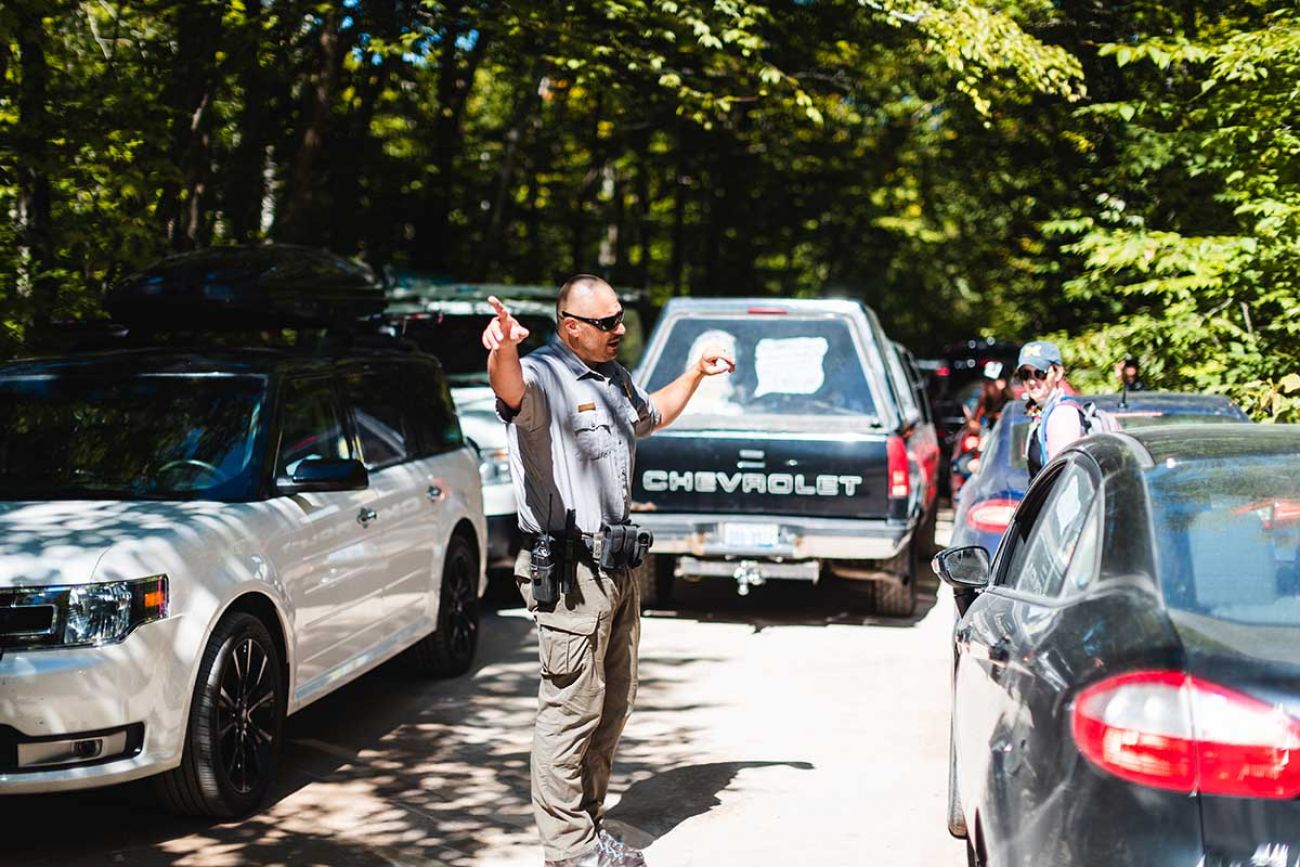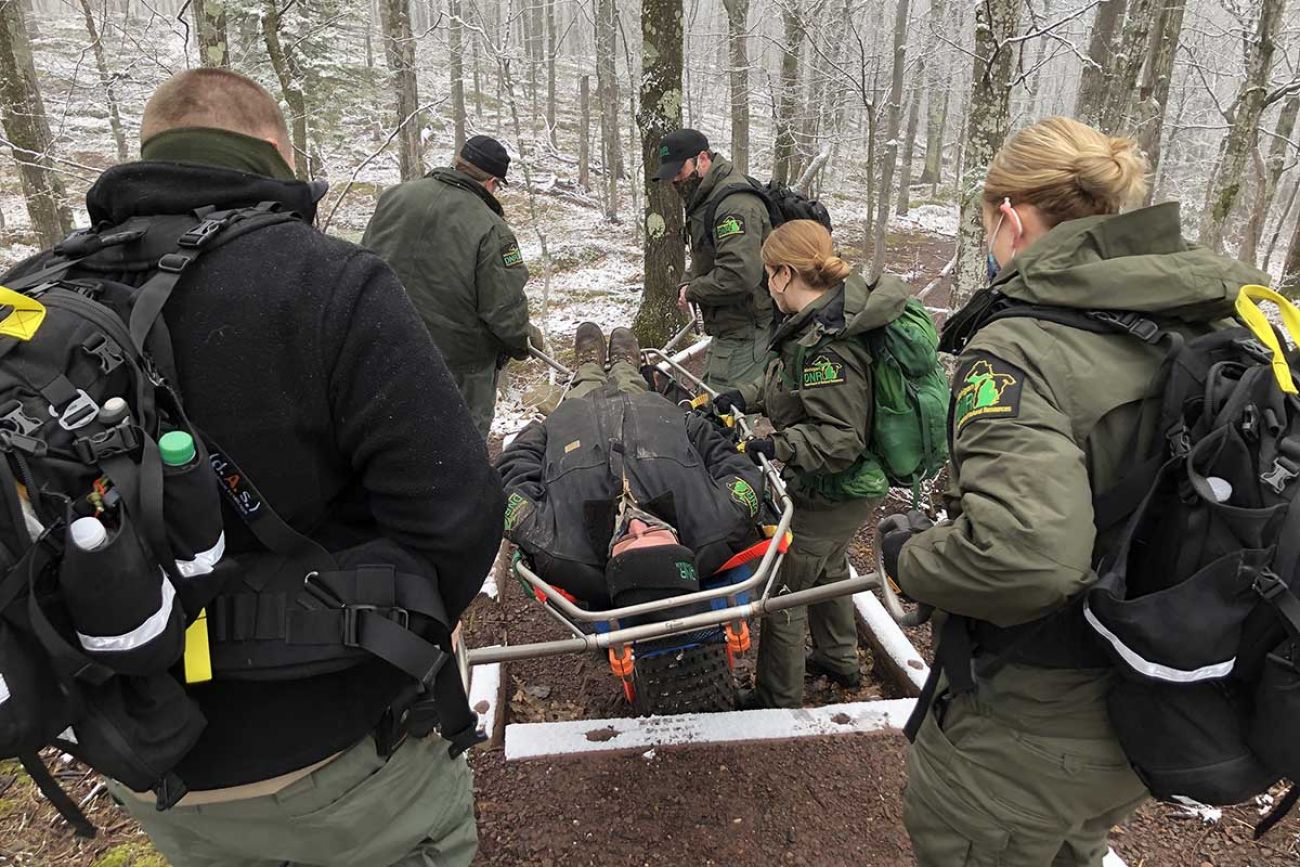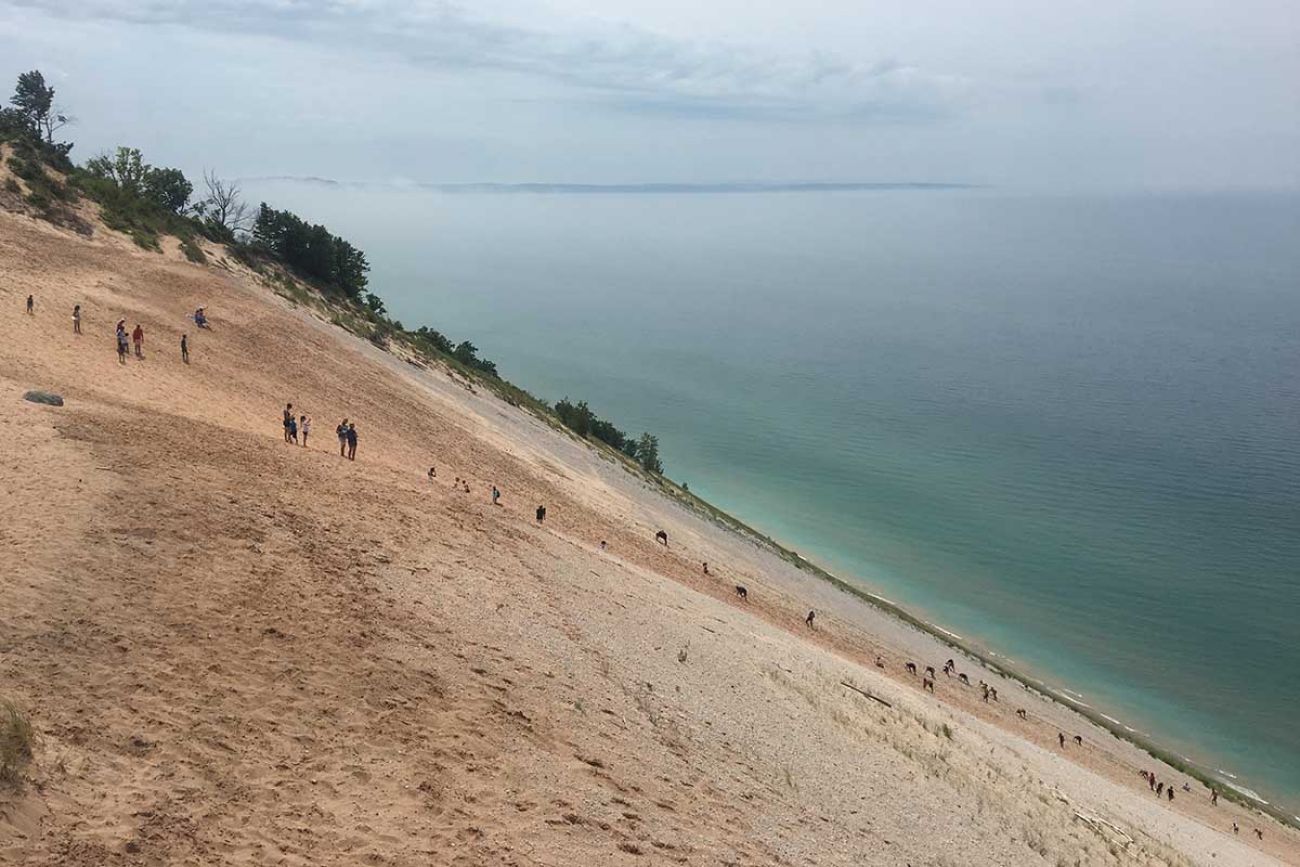Emergencies surge at northern Michigan parks, lakes. Time for a rescue tax?


Staff and rescue crews at some of Michigan’s most rugged and popular natural areas are pleading with visitors to heed safety warnings — and mulling tax increases — as a rise in emergencies has stretched resources thin.
In the latest incident, a 21-year-old man fell to his death at Pictured Rocks National Lakeshore’s Miners Castle overlook on Saturday after officials said he stepped over a barrier designed to keep visitors away from the cliff’s edge.
The Miners Castle overlook has been a particular problem spot as record visitor numbers in recent years have sparked an increase in safety concerns at Pictured Rocks, with visitors frequently climbing beyond barriers and disregarding posted warning signs.
Related:
- Smoke from wildfires making Michigan’s sunsets even more vibrant
- After federal rule change, Michigan resumes killing cormorants to save fish
- Land sale threatens public access in the U.P. Should the state step in?
- Shoreline erosion worries Michigan. Pictured Rocks cliff fall reminds why.
- In tiny Copper Harbor, a mountain biking boom causes growing pains
- COVID supercharged Upper Peninsula travel. Looks like it’s going to last.
- People ignore drowning warnings, so Michigan may close Great Lakes beaches
- Loved to death: Iconic Michigan lakeshores battered by crowds, waste
The park’s law enforcement rangers now spend the bulk of their time during the busy summer patrolling overlooks to dissuade people from hopping barriers, making emergency rescues on the water, or responding to runaway campfires and lost hikers.
So far this year, rangers at Pictured Rocks have completed 28 search-and-rescue operations, on track to surpass last year’s 31, which itself surpassed 29 in 2018.
The death Saturday at Pictured Rocks follows a year-plus of heightened safety concerns across Michigan's most remote parks and wilderness areas, amid a surge in first-time visitors during the COVID-19 outdoor recreation boom.
“Nature is beautiful but it's also dangerous,” said Joe Hughes, chief ranger at Pictured Rocks.
His message to would-be park goers: “Know your limits.”
Now, two Upper Peninsula lawmakers are spearheading a legislative response: Rep. Sara Cambensy, D-Marquette, introduced a bill last month that would allow local governments to get voter approval to collect excise taxes on short-term rentals, and use the money to fund local public safety programs.
Cambensy could not be reached for comment on the bill.
Sen. Ed McBroom, R-Vulcan and a sponsor of the Senate version, said it is designed to provide relief for tiny communities where the surge in tourism-related emergencies is “stretching our resources to the breaking point.”
“They pass millages to have ambulance services and fire services to protect themselves and their property, and then they get tens of thousands or hundreds of thousands of tourists in a very short amount of time,” McBroom said. “Next thing you know, the only two ambulances you have are 50 or 60 or 70 miles away on a rescue when a local resident has a health emergency.”
Both Cambensy and McBroom’s bills are awaiting committee hearings.
Unprepared and overconfident
Already last year, Pictured Rocks’ skyrocketing popularity had outstripped park resources in every way. This year, Hughes said, “is last summer on steroids.”
Crews are still working to determine what caused a wildfire this month at the park, but parks staff suspect it was a runaway campfire from someone’s illegal camp.
In the past month alone, crews have saved a woman who nearly drowned while attempting to swim across the icy shipping channel that separates Pictured Rocks from Grand Island; rescued a kayaker who grew hypothermic after capsizing in the lake; and evacuated two young girls who grew exhausted while backpacking with a summer camp group.
Strapped for resources to respond to such emergencies, Pictured Rocks rangers have begun training volunteer rescue teams to chip in.
The same trend holds true in Michigan’s state parks, said Department of Natural Resources Parks and Recreation Chief Ron Olson, particularly Michigan’s remote Porcupine Mountains Wilderness State Park.

Last year, crews conducted 52 search and rescue operations in the Porcupine Mountains, up from a past average of about a dozen a year. This year is on track to continue that trend.
Most of those emergencies can be chalked up to a lack of preparedness, Olson said. People inexperienced in wilderness recreation wander into the woods without a map or compass, expecting to rely on their cell phone for directions — only to discover that cell service is nonexistent in much of the park.
They go hiking without enough food or water, or without appropriate clothing. Or they select a strenuous hike that outmatches their skill and fitness level.
“Take the time to learn about this space you're going to, and the activity that you're thinking about engaging in,” Olson said. That includes making sure you’re physically prepared for the terrain, and equipped with the proper food, gear and clothing.
A GPS device is better than a phone, Olson said, but “always have old-school backups,” like a map and compass in case your device runs out of batteries. Pack to stay comfortable in a variety of weather conditions. Tell someone where you’re going, and when you plan to return.
At the Porcupine Mountains and Pictured Rocks, parks staff are trained in search-and-rescue operations.
But in some popular recreation destinations, local emergency crews are the first responders to incidents involving stranded hikers or capsized boaters.
As visitation has risen in the Upper Peninsula wilderness, those local crews have begun to feel the strain. In Copper Harbor, for instance, the local mountain biking club this year launched a bike patrol to take pressure off local volunteer first responders who were stretched thin by a spate of trail-related emergencies.
Marquette County is luckier than most, said Sgt. Errol Lukkarinen, who oversees the county sheriff’s department’s special operations division. Voters there passed a local tax to fund search and rescue operations, enabling the county to purchase equipment and provide regular training for its 30-plus volunteers.
But that arrangement isn’t common, Lukkarinen said. Other localities absorb search and rescue into local police and fire budgets that have little wiggle room to pay for an uptick in tourism-based emergencies.
The power of prevention
For now, parks and public safety officials are left to wonder how best to weather the surge of emergencies with the resources currently available.
One possible answer may be to emulate Sleeping Bear Dunes National Lakeshore.
There, parks staff and local emergency crews found themselves fielding more and more emergency calls when visitors grew exhausted or dehydrated crossing the hot, shadeless dunes, or became stranded at the bottom of a steep dune after climbing down to swim in Lake Michigan.
The No. 9 Overlook, a majestic 450-foot-tall dune along the Pierce Stocking Scenic Drive, was a frequent culprit.

“It takes them maybe 15 minutes to go down it, and then people look back up and they're like, ‘Oh no,’” said Officer Savannah Hall, a federal law enforcement officer with the National Park Service at Sleeping Bear Dunes.
So four years ago, the park in partnership with the nonprofit Friends of Sleeping Bear Dunes, created a volunteer program designed to dissuade visitors from taking such risks.
Volunteers or parks staff stand at problem areas like the No. 9 Overlook, and encourage would-be climbers not to take the risk unless they’re adequately prepared.
Since the so-called Preventative Search and Rescue program launched, 911 calls from the park are down from 60 in 2017 to eight in 2019.
So far this year, program volunteers have logged more than 11,800 interactions with visitors.
“It has definitely prevented medical emergencies through just being there giving people the knowledge and the education that they need,” Hall said.
It’s a model that works, Hall said, and one that could be replicated at other parks if they can find the budget and volunteer base to sustain it.
Michigan Environment Watch
Michigan Environment Watch examines how public policy, industry, and other factors interact with the state’s trove of natural resources.
- See full coverage
- Subscribe
- Share tips and questions with Bridge environment reporter Kelly House
Michigan Environment Watch is made possible by generous financial support from:
Our generous Environment Watch underwriters encourage Bridge Michigan readers to also support civic journalism by becoming Bridge members. Please consider joining today.
See what new members are saying about why they donated to Bridge Michigan:
- “In order for this information to be accurate and unbiased it must be underwritten by its readers, not by special interests.” - Larry S.
- “Not many other media sources report on the topics Bridge does.” - Susan B.
- “Your journalism is outstanding and rare these days.” - Mark S.
If you want to ensure the future of nonpartisan, nonprofit Michigan journalism, please become a member today. You, too, will be asked why you donated and maybe we'll feature your quote next time!




